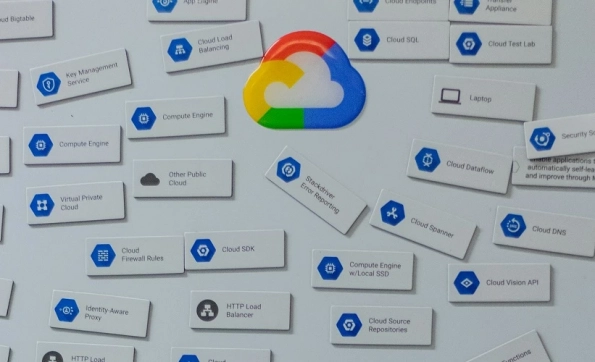Online safety is becoming a vital issue as organizations move their operations to the cloud. According to data collected from various businesses, cloud data breaches in 2023 rose by 39%. Cybercrime is expected to cost $9.5 trillion USD in the global economy in 2024, as predicted by Cybersecurity Ventures.
On October 21, 2024, Google Cloud launched a new version of VRP, which included 461 products and services, of which 140 were eligible for maximum payout on bug findings. Analysts will receive up to $101,010 for announcing major vulnerabilities. This approach improves reliability and leads to positive relations between the company and security researchers through an immediate contact line.
The program helps the appropriate authorities identify system problems more quickly by motivating and rewarding people for their efforts. Read on for more details about this project.
A Clear Path to a Safer Cloud through a Specialized VRP
The fact that the tech giant has carved out a cloud-specific VRP shows its intent to put more focus and investment into a much safer online storing system. Google has made recording security weaknesses transparent through its reporting facility, and the reward system motivates people to play an active role in pinpointing the problem.
What is more, unlike many other bug bounty programs, where one simply denounces a vulnerability, this initiative describes specific ones that are eligible for the reward: Cross-site scripting, authentication and authorization problems, and remote code execution.
Getting such a detailed sample report is important for researchers. It helps them clearly define risks and shows how the briefing will benefit others. It will allow them to recognize the impacts of any issues and work together to fix them.
A Call for Responsible Disclosure
It is noteworthy that the tech leader puts much weight on the ‘responsible disclosure’ of vulnerabilities, which may prove to be surprisingly profitable. Researchers must only target their own Google accounts. They should not do anything that could upset other users or harm the company’s platform. The guidelines apply not only to save the organization from any legal consequences, but also to support ethical principles within the cybersecurity field.
Empowering Researchers in Google and Alphabet’s VRP
In the context of the growing number of IT systems and infrastructure breaches, cybersecurity still occupies a leading position globally. As threats become more refined, the requirement for good solutions also expands.
The initiative focuses strongly on reporting, especially the specificity of feedback. Scientists will explain how real attackers can exploit these weaknesses and what they can accomplish. This breakdown helps with prioritizing problems and guarantees that the given information is useful and significant.
Since the VRP is now active with over 460 solutions, and 140 of them are eligible for the maximum tier of bug bounty programs, let’s break down the reward structure. As mentioned in the introduction, security analysts can earn up to $101,010 for loathing severe vulnerabilities. Also, the initiative offers direct contact between people and engineers, thereby boosting the rate of vulnerability scans. See the full table below.
Reward Structure for Vulnerabilities
The following table outlines standard rewards for various classes of vulnerabilities:
This is in line with Google Cloud’s general approach of partnering with the data protection industry to combat new threats. As compliance and privacy rules become more complex, opportunities like the VRP offer an efficient route to incorporating external talent to enhance safety. This plan focuses on how to prevent weaknesses from turning into risks that could compromise the user’s information.
Besides helping solve crucial issues that instantly affect online storage, the VRP is also an avenue through which researchers enhance standard cloud protection. Apart from motivating users to foster proper information, the tech giant promotes corporate responsibility and accountability amongst participants in the cybersecurity industry.
Quality of Reports
HM is highly motivated to hire analysts who can earn good money by discovering critical defects that help to ensure the goal of making the cloud safe. To receive the reward, the researchers are requested to provide elaborate briefings that describe the possible consequences of the vulnerabilities. This includes indicating who might use them and what benefit they can otherwise derive. The VRP outlines different categories of vulnerabilities that qualify for rewards, including Remote Code Execution and Cross-Site Scripting.
The reward structure is as follows:
This way, not only are the vulnerability assessments for the organizations more effective, but the reports that are generated are also effective and impactful.
Examples of Reward Amounts
Here are a few straightforward examples showing how the rewards work:
A Remote Code Execution (RCE) bug on accounts.google.com with a detailed description could fetch up to $31,337, depending on where the glitch occurred.
A bug that could help someone input and get access to a user’s saved address on the domain is usually worth $13,337.
An easy to exploit Cross-Site Scripting (XSS) hole at Google Translate targeting English pages would be worth $20,000.
A discovered loophole on chat.google.com announcing how many messages a user sends in a day under the usual tab would earn the reporter $7,500.
The mostistle, an acquisition domain can have a difficult-to-exploit XSS worth $300.
When examining a flaw, analysts are allowed to act only on their accounts and should not violate others’ rights or interfere with their accounts. The descriptions should be concise and include a short link to the proof of concept, preferable to long rants.
Some Disclaimers
For example, if you identify a flaw but realize you do not know how to alarm others about it, the panel has sound attack scenarios to warrant rewards. To show the severity of a glitch without bug snooping, it is recommended to send it early to see the maximum level of damage.
If a bug is publicly leaked, it will not earn a reward, which goes against the rules of coordinated disclosure. Users cannot receive rewards if they are on sanctions lists, and the initiative can be stopped at any time. This Vulnerability Reward Program helps improve data safety for everyone by encouraging teamwork between the tech giant and the security community.
Final Thoughts: Strengthening Trust in Cloud Services
As more and more organizations opt for online storage solutions, security will still be a concerning factor across the world. The example of Google Cloud’s Vulnerability Reward Program shows how large tech companies and hackers can work together. This approach encourages a more secure online environment overall. This means that as companies harness the Cloud, adopting such measures will be central in protecting information and earning much-needed confidence in the new world of the digital economy.



